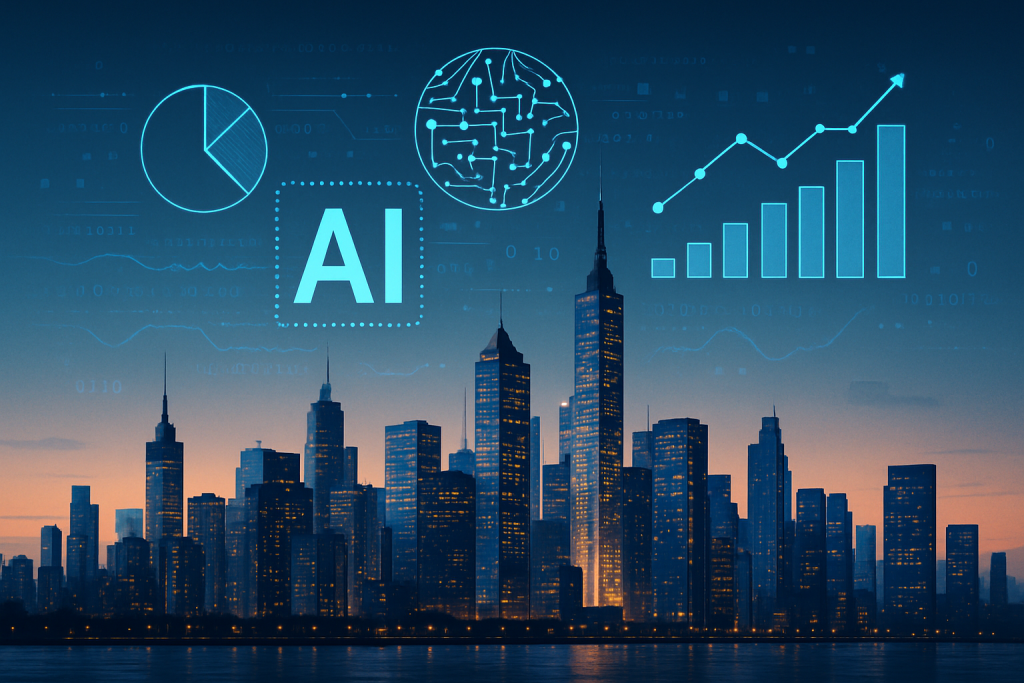The year is 2025. Flying cars, still a pipe dream. Robot butlers, mostly glorified Roombas. But artificial intelligence? That’s not science fiction anymore. It’s the invisible hand shaping everything from our streaming recommendations to, increasingly, national economies. And yesterday, the International Finance Forum (IFF) dropped a bombshell report, a sort of “Who’s Who” of the AI world, titled the Global AI Competitiveness Index Report. Think of it as the AI Olympics, but instead of gold medals, we get cold, hard data.
The IFF, not exactly known for its lighthearted beach reads, is a heavyweight organization that usually deals with things like sovereign debt and global trade imbalances. So why are they suddenly so interested in AI? Because AI isn’t just about clever algorithms and chatbots anymore. It’s about power, influence, and who gets to write the future’s code, both literally and figuratively.
This report isn’t just another listicle ranking countries by their number of GPUs. It’s a serious attempt to quantify something notoriously slippery: a nation’s overall AI prowess. It’s like trying to measure the Force, if you’re a Star Wars fan, or perhaps more appropriately, like trying to quantify the Infinity Stones and their impact on the MCU.
So how do you even begin to assess something as complex as AI competitiveness? The IFF broke it down into five core dimensions, each a critical piece of the puzzle:
Technical Development and Applications: This is where the rubber meets the road. Are there thriving AI companies within the country? Are they actually doing anything meaningful, or just building slightly smarter spam filters? The IFF isn’t just counting companies; it’s looking at their impact, their innovation, and their contribution to the overall AI ecosystem. Think of it as judging the quality of a country’s AI-powered apps, not just the quantity.
Research and Innovation: This is the engine room of AI. Are researchers pushing the boundaries of what’s possible? Are universities churning out groundbreaking papers? And, crucially, is that research translating into real-world applications? It’s not enough to have brilliant minds; they need to be solving real-world problems. This dimension is all about the raw brainpower and the innovative spirit driving AI forward.
Human Capital: You can have all the fancy algorithms in the world, but without skilled people to build, maintain, and deploy them, you’re dead in the water. This dimension looks at the availability and quality of AI talent. Are universities producing enough graduates with the right skills? Are there robust training programs to upskill the existing workforce? The AI revolution won’t be televised; it’ll be built by highly skilled engineers, data scientists, and ethicists.
Policy and Regulatory Environment: This is where things get interesting. Is the government helping or hindering AI development? Are there clear regulations in place to protect consumers and prevent misuse? Or is it a Wild West scenario, where anything goes? A supportive policy environment can be a huge competitive advantage, attracting investment and fostering innovation. A restrictive one can stifle progress and drive talent elsewhere. Think of it as the difference between a well-manicured garden and a tangled jungle.
Market Acceptance and Infrastructure: AI doesn’t exist in a vacuum. It needs a receptive market and the necessary infrastructure to thrive. Are businesses willing to adopt AI technologies? Is there sufficient computing power and data storage available? And, crucially, is the public comfortable with AI being integrated into their lives? A country with cutting-edge technology but a skeptical population is going to struggle to realize the full potential of AI.
The IFF’s report doesn’t just present these dimensions in isolation. It emphasizes the importance of a balanced approach. A nation that excels in technical development but lacks a supportive policy environment or sufficient human capital will likely struggle in the long run. It’s like building a skyscraper on a shaky foundation; it might look impressive at first, but it’s not going to stand the test of time. The report serves as a wake-up call for governments to invest in comprehensive AI strategies that encompass not only technological advancements but also education, policy-making, and infrastructure development.
The immediate implications are clear: countries will be scrambling to see where they stand in the rankings and identify areas for improvement. Expect to see a flurry of new AI initiatives and policy announcements in the coming months, as governments try to boost their competitiveness. The report is a roadmap, pointing out where countries are strong and where they need to invest more strategically.
But the long-term implications are even more profound. This report could shape the global AI landscape for years to come, influencing investment decisions, talent flows, and the overall direction of AI development. It’s a reminder that AI isn’t just a technological race; it’s a competition for economic and political power. The countries that master AI will be the ones that shape the future. It’s a high-stakes game of chess, and the IFF’s report is just the opening move.
Of course, any attempt to quantify something as complex as AI competitiveness is bound to be imperfect. There will be debates about the methodology, the indicators used, and the weight given to each dimension. But the IFF’s report is a valuable starting point, a framework for understanding the multifaceted nature of AI development and the challenges and opportunities that lie ahead. It’s a reminder that the AI revolution is not just about technology; it’s about people, policies, and the future of our world.
Discover more from Just Buzz
Subscribe to get the latest posts sent to your email.


